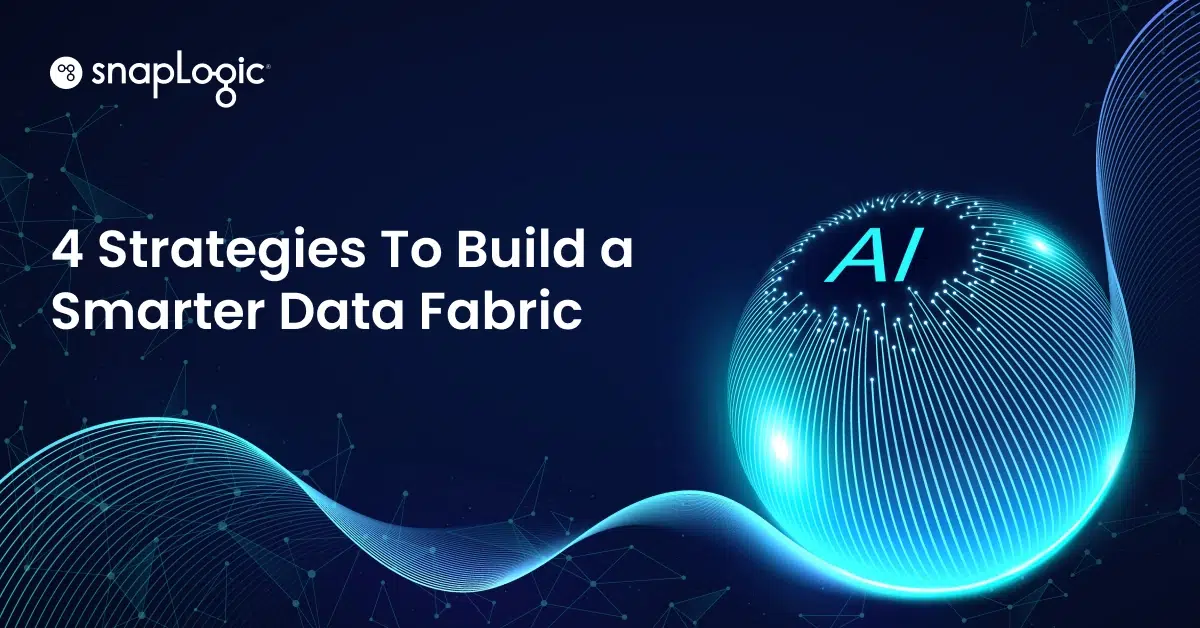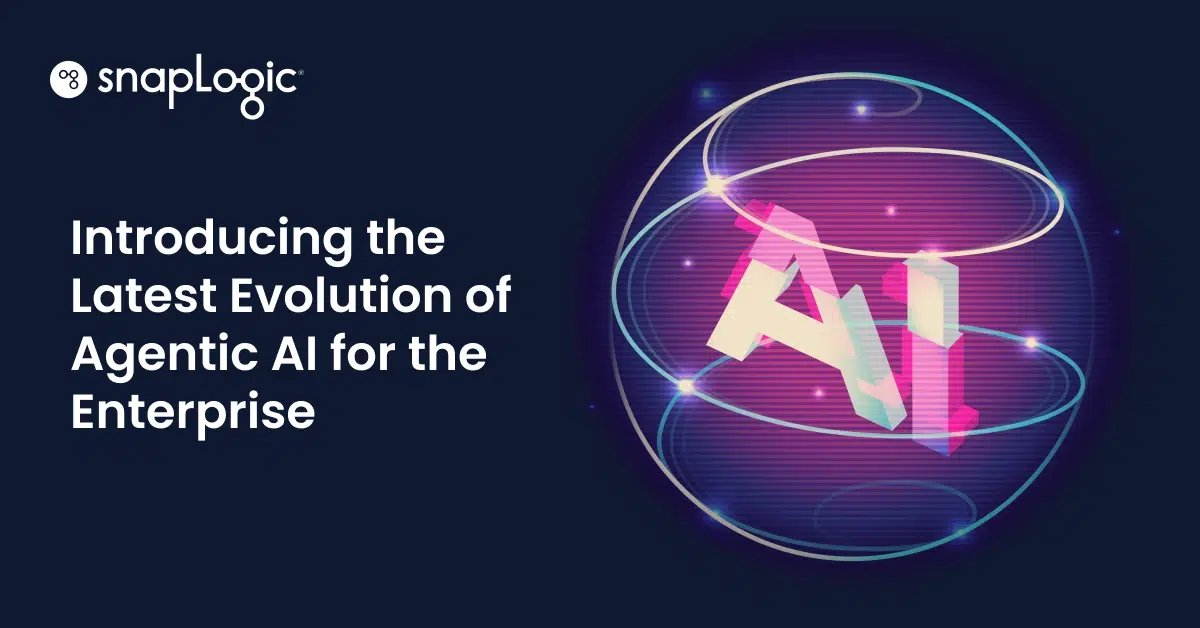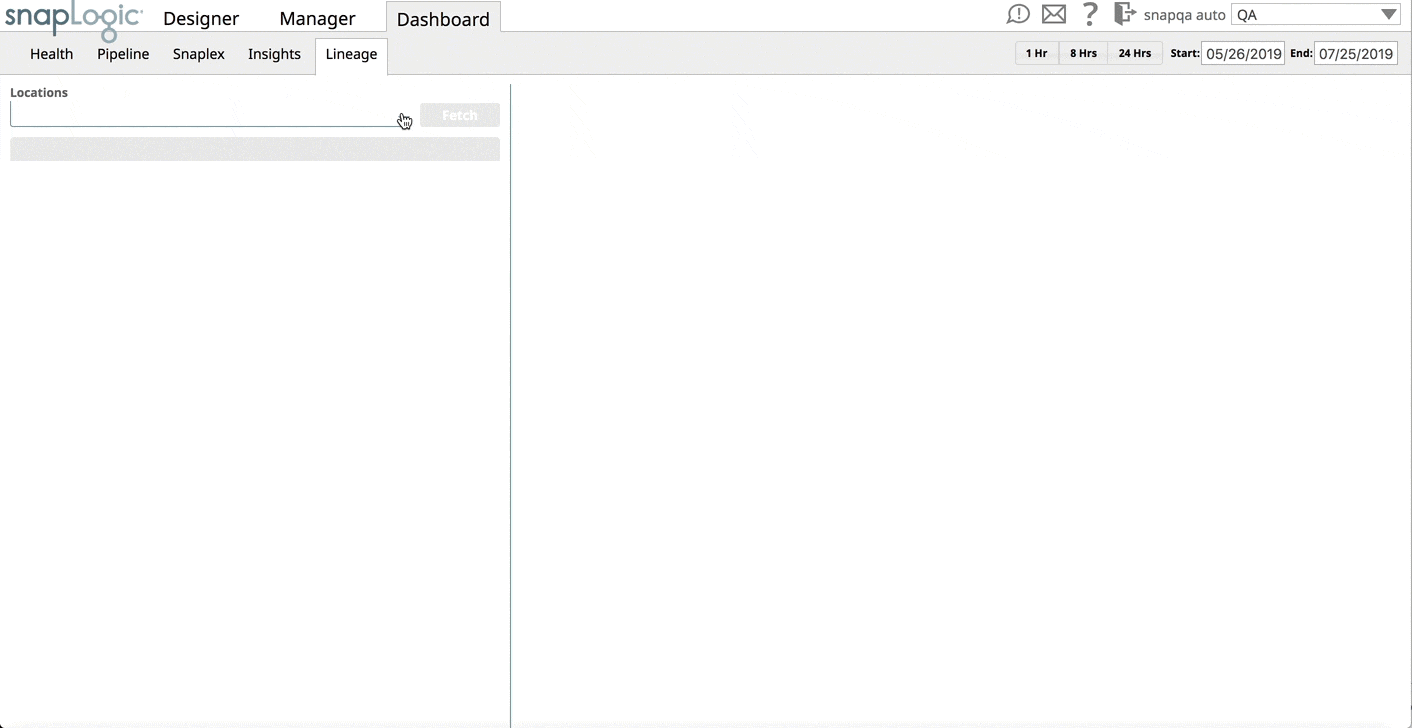We are excited to announce the general availability of the August 2019, 4.18 release of the SnapLogic Intelligent Integration Platform (IIP). This release continues to drive better productivity, deeper insights, and higher performance, empowering organizations to build their digital ecosystem and make enterprise integration even faster and easier. The August 2019 platform release also adds a new API developer portal to expose API endpoints to outside developers, as well as new big data processing support for customers building data lakes on Azure Databricks.
Lower barrier to entry for citizen integrators and faster time-to-value for integration specialists
SnapLogic, from its inception, has focused on enabling citizen and ad-hoc integrators. To that end, we provide a low-code, no-code platform and a number of productivity features that make it easy for everyone to build integrations. With the release of the Iris AI-based integration assistant two years back, SnapLogic was the first mover on AI-driven productivity enhancement in the iPaaS market. Iris AI leverages the knowledge of all successfully completed pipelines to recommend the first Snap, next Snap, and previous Snap for users as they are building out their pipelines.
With this release, we are improving integrator productivity further in two meaningful ways.
– Iris AI Improved Search:
- Snap Search: The SnapLogic platform now performs a contextual search rather than just a label-based search and leverages the SnapLogic documentation to surface relevant contextual results to the user. For example, if a user wants to read a file from an SFTP server, typing ‘sftp’ in the search box will surface Snaps such as file reader, file writer, and directory browser since the documentation for those Snaps mention SFTP as one of the endpoints supported.
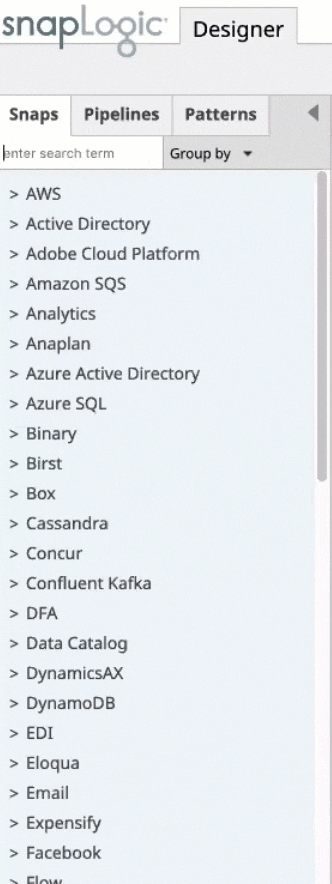
- Pipeline Search: An organization may have hundreds of users using the SnapLogic platform. Each user may have dozens of projects they are using at any given time. Going through so many folders for a pipeline with specific keywords or Snaps is a time-consuming task. Now, when a user is searching for pipelines with specific Snaps or with specific keywords, the platform answers ‘where’ and ‘how many’.

– Iris AI – Pipeline Recommendation:
- Moving beyond the Snaps, Iris now recommends entire pipelines to users based on the endpoints they want to connect. It vastly lowers the barriers to entry to new integrators trying to adopt the SnapLogic platform because they can now make more educated guesses. When a user drags the source Snap and the destination Snap to the canvas, Iris leverages intelligence from the pipelines in the user’s org or vetted pipelines from the SnapLogic patterns catalog to suggest complete pipelines to the user.
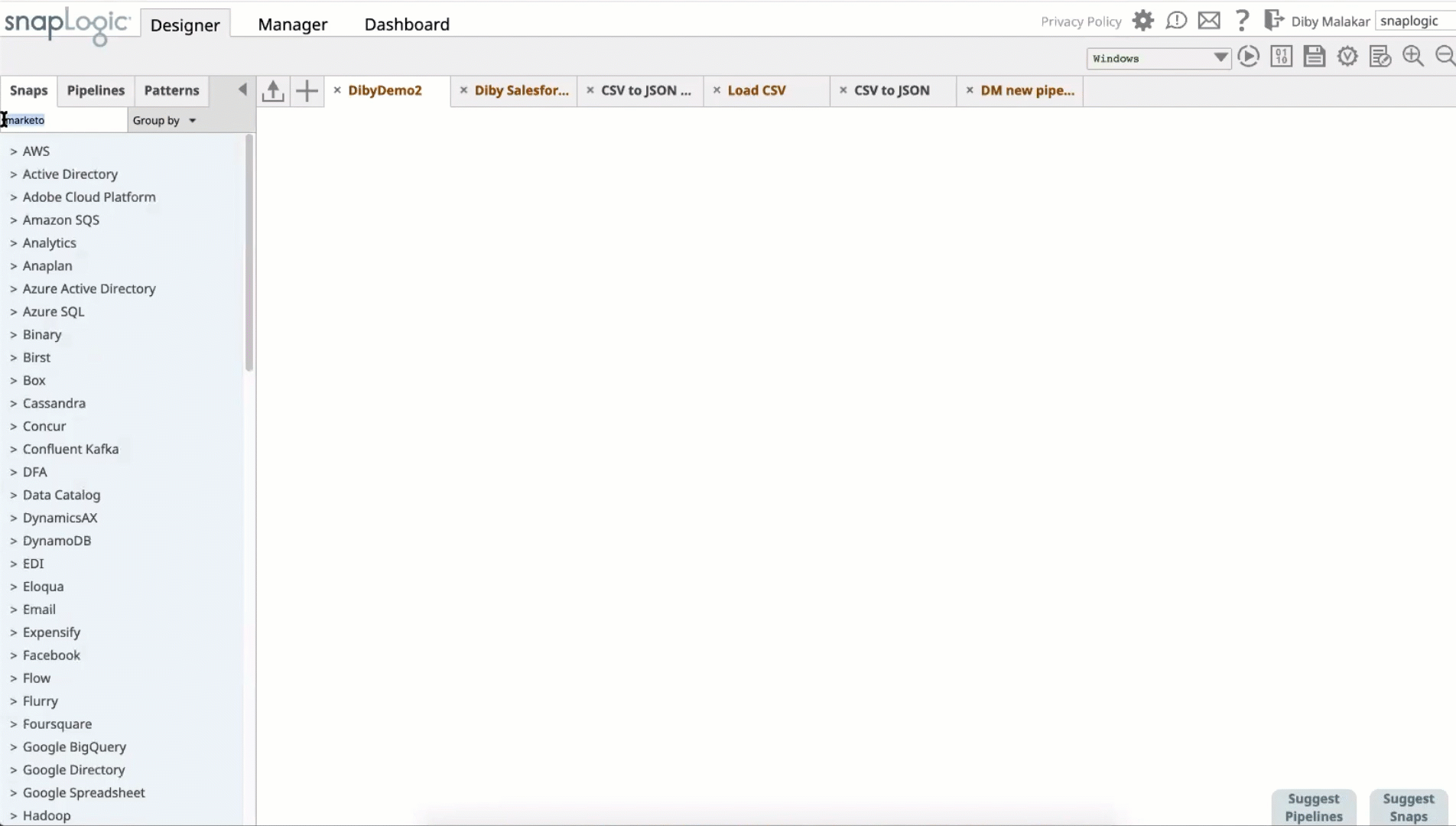
Watch the SnapLogic Iris AI Enhancement video to learn more.
Improved Monitoring using Disk Space Alerts
Organizations need good insights into their SnapLogic environments. Without enough disk space or memory, a pipeline can stall without clearly signaling to the user what actually went wrong. Over the last few releases, we have added CPU usage alerts and memory usage alerts so SnapLogic admins can take corrective action whenever those stats exceed predefined thresholds. We are adding alerts in the dashboard if the filesystem free disk space falls below a predefined threshold. With this alert, users can take proactive actions quickly and improve pipeline execution reliability.

SSO Improvements
Single Sign On (SSO) is the enterprise security standard at many organizations. We have supported SSO logins for many years now. With this release, we add support for service provider- or identity provider-based single logout, helping customers meet their enterprise’s security standards across all applications.
Data Lineage Support
Data stewards and data architects in organizations are looking to rationalize and streamline data silos so they can easily find and use relevant data.. Knowing how a data asset is being used across workflows helps with the root cause analysis when the data is modified in unexpected ways and with efficient retirement and consolidation of the data assets.
SnapLogic Data Lineage provides a graphical representation data source and all the SnapLogic workflows that interact with those sources allowing users to perform impact analysis or address debugging challenges. The lineage representation may be one of the following:
- A Data asset –> (used by multiple) SnapLogic pipelines
- A SnapLogic pipeline –> (that interacts with) One or more data sources
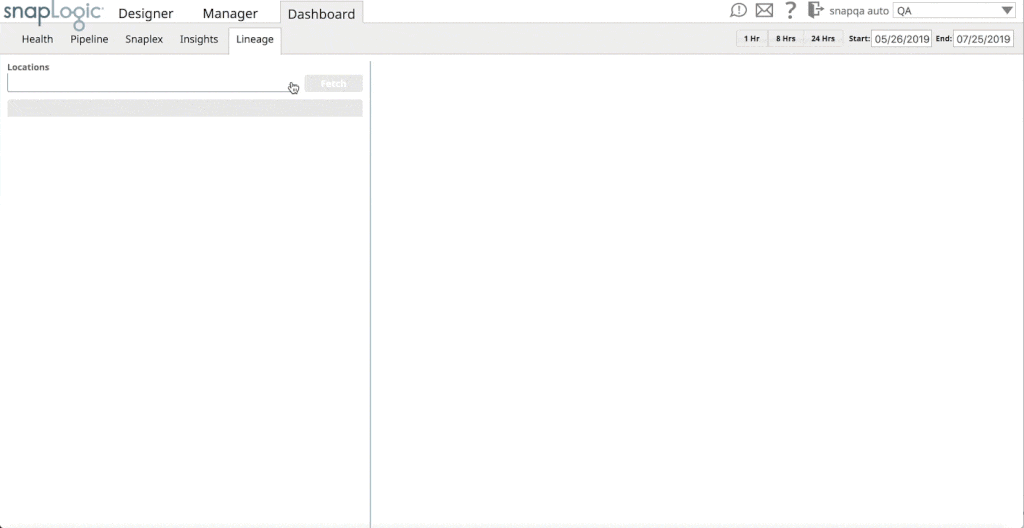
Watch the SnapLogic Platform Enhancement video to learn more.
API Management: Enable self-service through API Developer Portal
With this release, organizations can now enable self-service for internal or external API consumers seamlessly with the developer portal. API consumers don’t need SnapLogic credentials to access the developer portal. The developer portal provides discoverability to the API consumer through a search interface, so they can easily discover APIs that they are looking for. Additionally, if the approval type for an API proxy has been set as manual, external API consumers must make an explicit API access request through the developer, and be granted access, before APIs can be consumed. This access request workflow is a representation of the advanced access control list (ACL) based authorization. Thus, an organization with a small team of API developers/administrators can manage thousands of API consumers effortlessly.
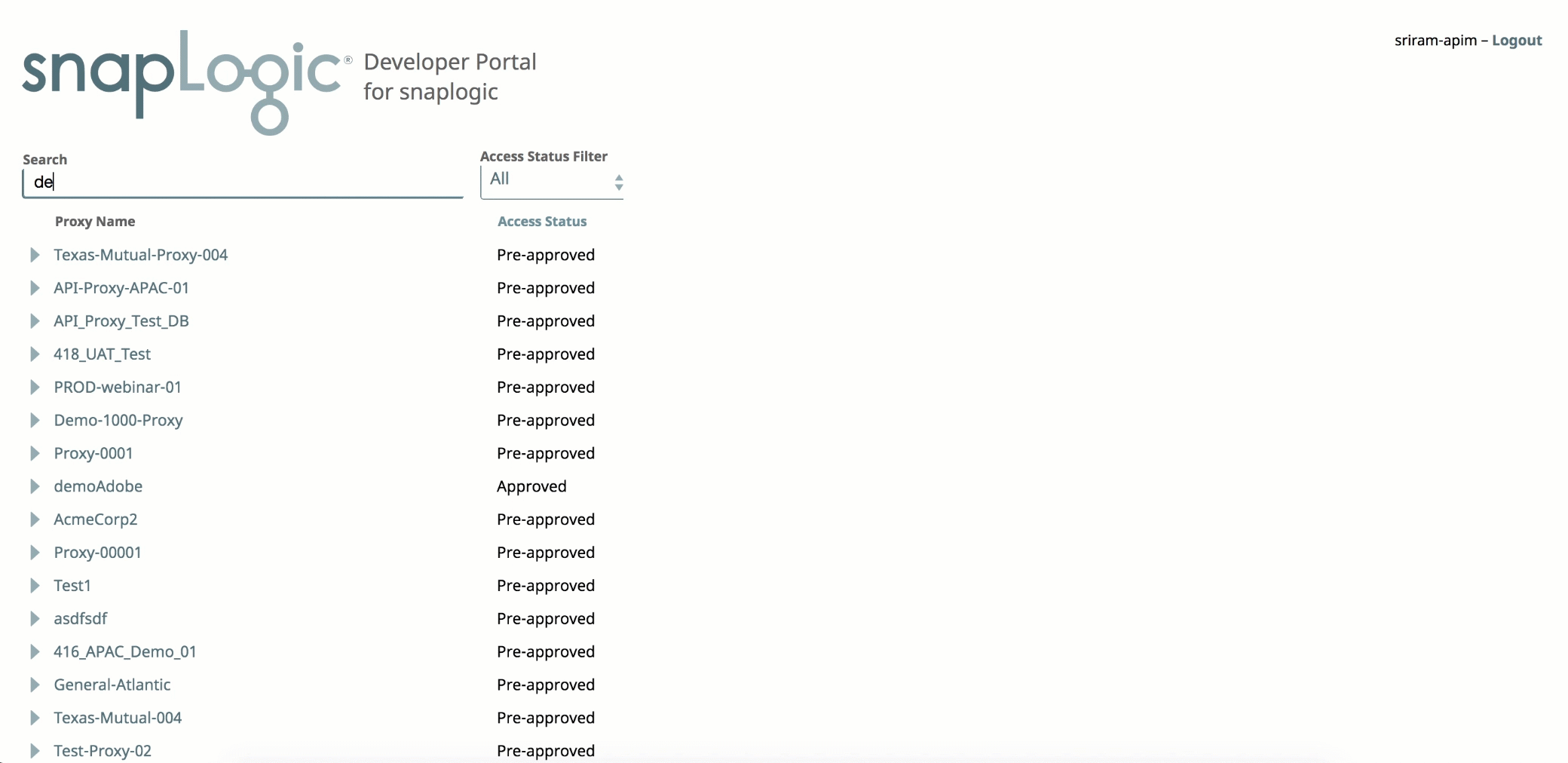
Complementary to the developer portal is the API Manager portal for admin tasks. This admin portal enables API managers to govern thousands of API consumers seamlessly all in a single unified platform. The admin portal provides an automated way to onboard and service internal and external users with limited IT resources and reduce the total cost of ownership (TCO). Through the admin portal, an API manager can:
- Expose selected proxies to the outside world, making them and the associated APIs visible on the developer portal
- Specify the user approval process which can be automatic or manual. The manual approval process can support advanced authorization flows
- Manage API consumers
- Search API proxies or specific APIs
- Test APIs before making them available to API consumers
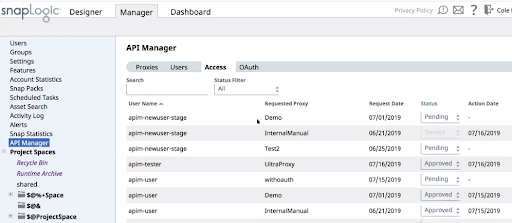
Watch the SnapLogic API Management Enhancements video to learn more.
SnapLogic eXtreme Enhancements
eXtreme for Azure Databricks: SnapLogic eXtreme was released back in August of last year. It democratizes big data processing for business analysts, enabling them to build visual data workflows to process terabyte-scale data. SnapLogic eXtreme was originally available only on Amazon Web Services and leveraged Amazon EMR to process big data workloads on-demand. With the August 2019 release, business analysts can now apply the same visual approach to creating big data workflows in Azure Cloud. SnapLogic eXtreme will support Azure Databricks as the processing engine for big data processing with Windows Azure Storage Blob (WASB) as their data lake. Organizations should leverage SnapLogic eXtreme any time the combined datasets exceeds the memory thresholds of a single SnapLogic processing node and heavy transformation logic needs to be implemented.
Amazon Redshift Snaps for eXtreme: Users can now read from and write to Redshift databases in SnapLogic eXtreme pipelines.
Learn more by watching the SnapLogic eXtreme enhancement video.
Enhanced security, efficient administration, and better performance with Snap updates
We have updated a whole host of Snap Packs in the August 2019 release.
We have now added support for new features for the following Snap Packs.
- Hadoop Snap Pack now provides support for Azure Data Lake Storage Gen2 (ADLS Gen2). ADLS Gen2 combines the file level security and scale of ADLS Gen 1 with tiered storage, low cost, and high availability of Azure Blob Storage.
The SnapLogic platform is an integral part of an enterprise’s IT infrastructure. As such, it should be protected with stringent enterprise security tools and standards. The following Snap Pack enhancement helps organizations improve their security posture for SnapLogic deployments.
- Active Directory support for Microsoft SQL Server Snap Pack:
- Administrators can now reuse Active Directory credentials to authenticate users rather than creating individual users for Microsoft SQL servers.
- Kerberos support for Script Snap Pack:
- PySpark Snap now supports Kerberos authentication mechanism enabling big data and data engineering teams to adopt this enterprise standard for running their Spark workloads.
- S3 encryption support for Snowflake Snap Pack:
- Snowflake Snap pack now supports encryption of the data at rest in the S3 data lake, removing the need for customers to encrypt and decrypt data manually.
The following Snap updates greatly simplify admin work for SnapLogic administrators by making it easy to provide and revoke users’ access to tools that are critical for team collaboration.
- Service Account Support for Binary and Box Snap Pack:
- With Google Service Accounts, SnapLogic admins can easily provision access for multiple users to perform one or more operations within the Google Cloud Platform
- Service account support for Box Snap Pack now enables SnapLogic admins to easily manage multiple users for shared resources in their Box accounts.
We have also made some performance improvements to improve data throughput.
- The Confluent Kafka Snap Pack provides significantly improved performance of the Consumer and Acknowledge Snaps by acknowledging Kafka messages in bulk rather than acknowledging every message separately.
Register for the webcast on the SnapLogic August 2019 release that takes place on Thursday, August 15, to get a closer look at the new updates. You can learn more about these updates by going to SnapLogic Documentation. You can also visit the SnapLogic Community to learn more.








